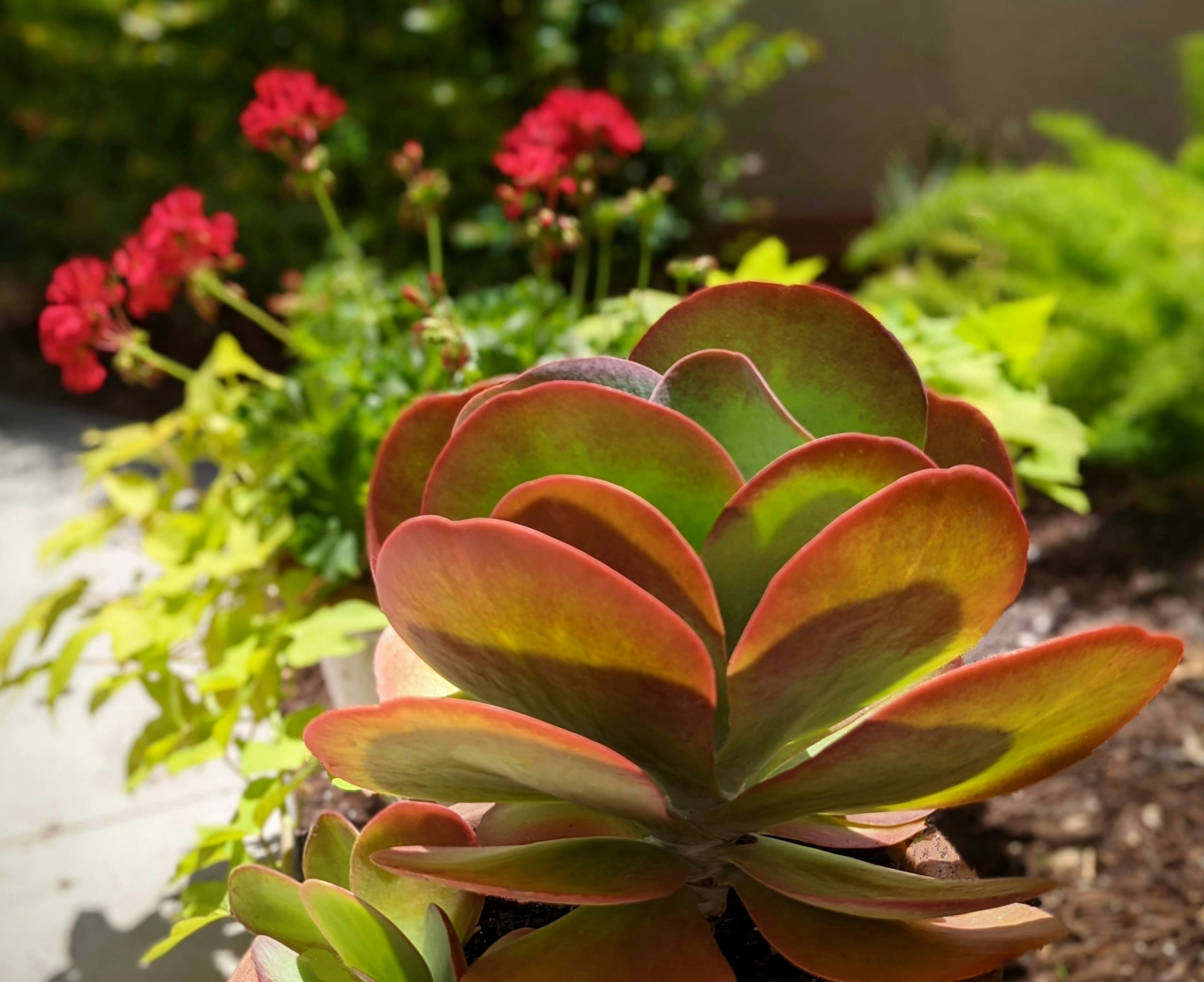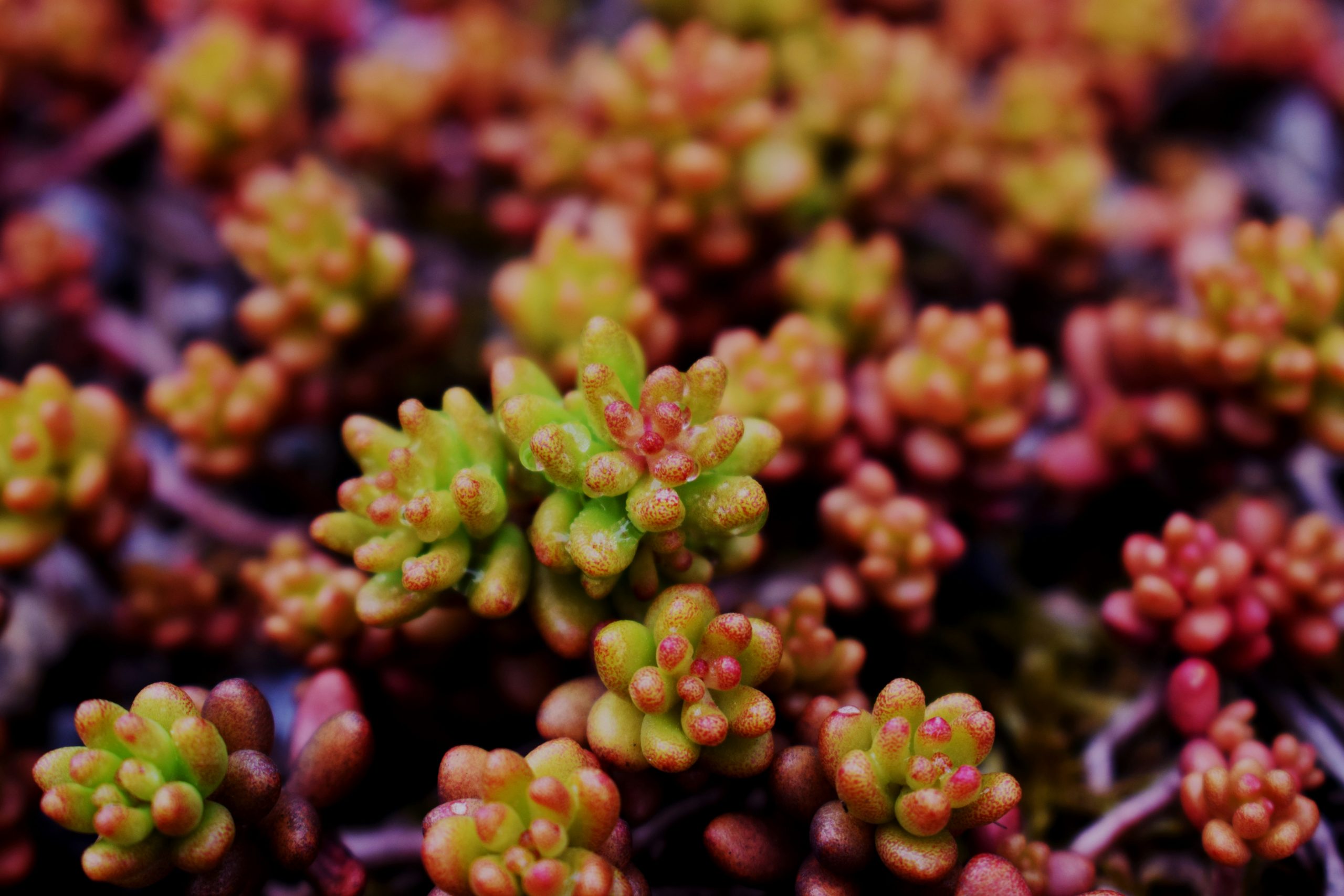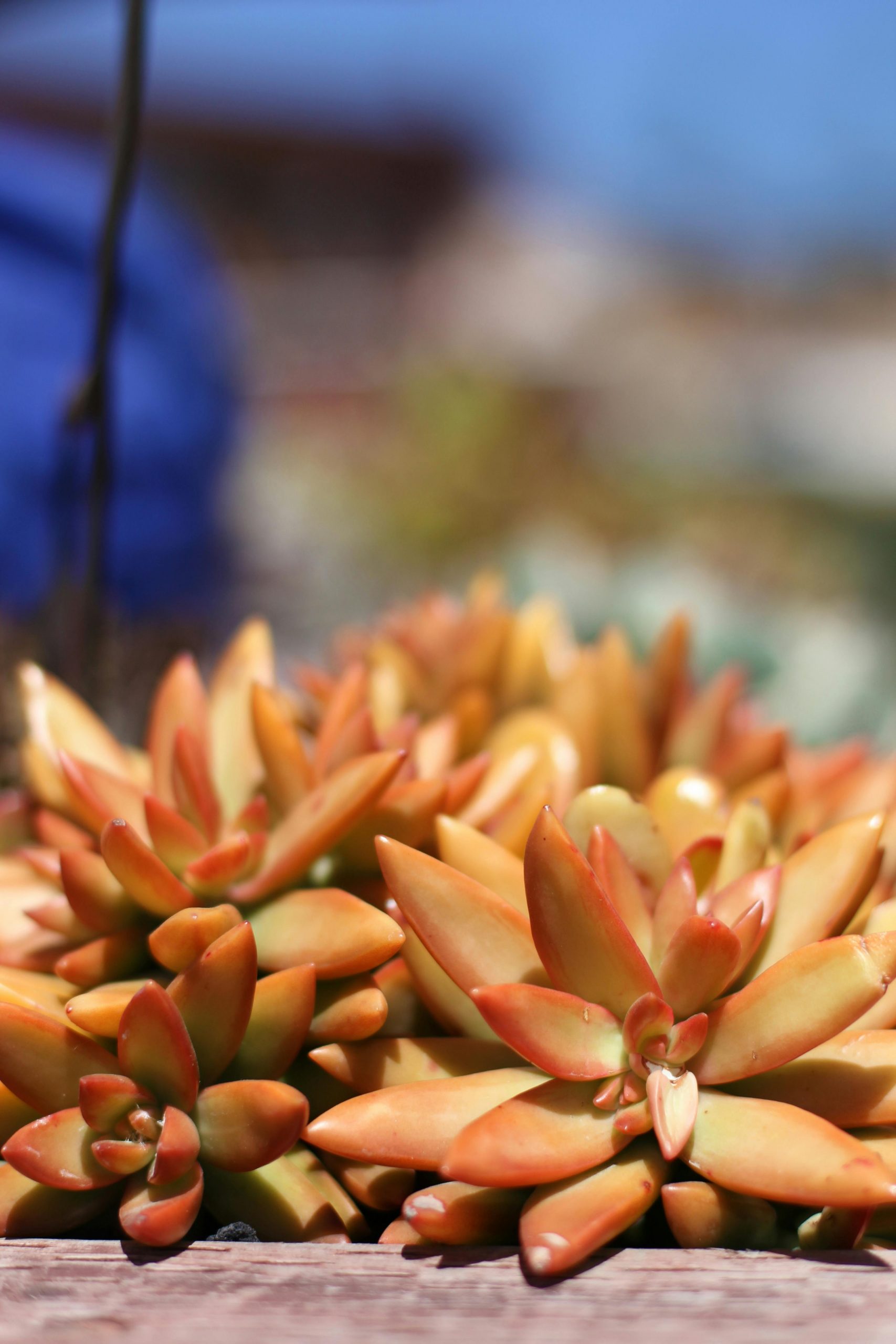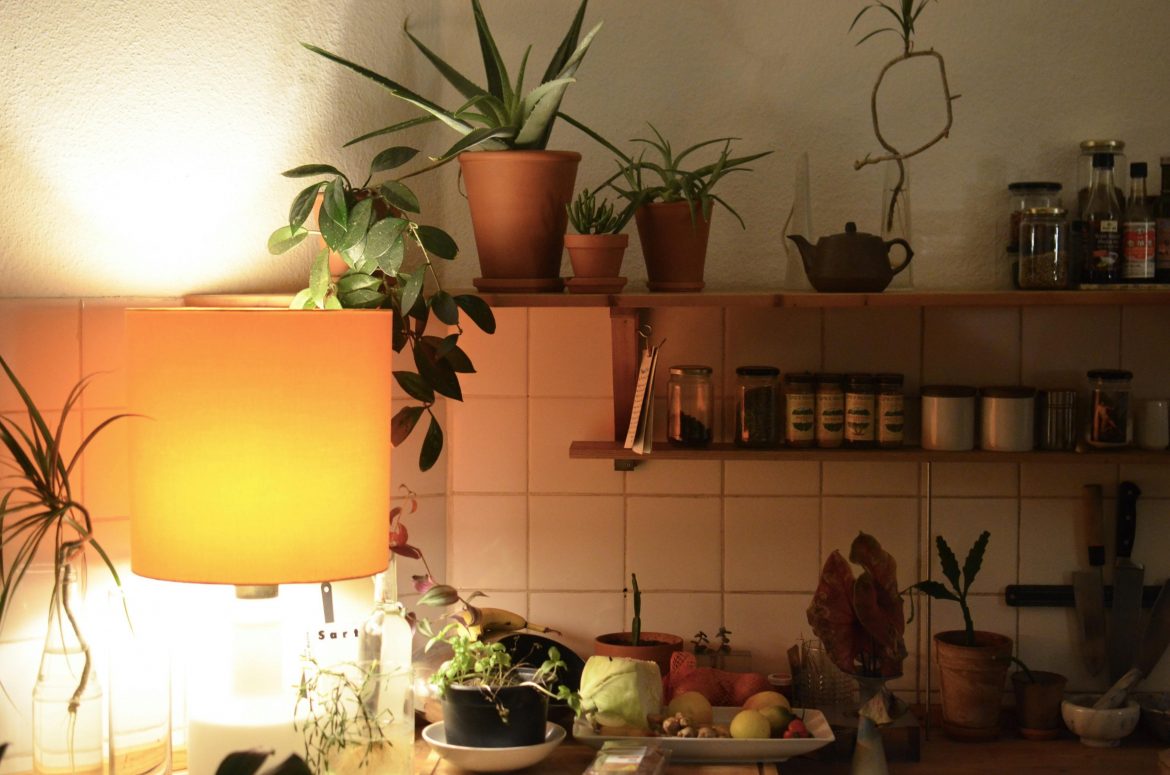Spice up your Autumn and Winter garden or home decor with these warm-toned succulent species.
These rare varieties bring a pop of colour and warm sunset tones. In non-yellow succulents, leaves turning yellow and mushy are a sign of rot, so it’s extra special to find varieties that are naturally yellow when healthy. They tend to be from groups like Sempervivum, Sedum, and cacti and are usually adapted to full sun conditions. Give your golden plants as much light as possible to bring out their most vibrant hues.
Warm up your home for Autumn with these fiery-toned succulents:
Kalanchoe orygalis
Kalanchoe orygalis, often lovingly called copper spoons for its spoon-shaped, copper-toned leaves, catches the eye in sunlit gardens. Its leaves have a felt-like texture and mature from silver to copper as they age. When planting, consider pairing it with contrasting succulents to highlight its unique colouring.

Image credit: Unsplash
Peperomia graveolens
Peperomia graveolens sports red on the underside of its leaves, providing a striking contrast to the green on top and almost resembling a precious gem, hence the common name ruby glow. This plant is ideal for slightly shadier spots, growing happily in partial sun and moderate humidity.

Image credit: Unsplash
Euphorbia tirucalli
A South African staple, Euphorbia tirucalli (aptly named firesticks) is a conversation starter, with coral-red branches that intensify in colour during cooler weather. This plant, resembling a bundle of fiery branches, adds an architectural element to any garden. This succulent can grow quite tall, making it a stunning focal point in a mixed border or a solo feature in a large pot.
Crassula capitella ‘Campfire’
Crassula capitella ‘Campfire’ changes from a lime green to a vivid red on leaf edges, emulating the colours of a blazing fire.
This transformation is most pronounced when exposed to direct sunlight and adds a dramatic flair to your garden. It forms a dense mat and can be used to fill spaces in sandy areas or containers.

Image credit: Pexels
Graptosedum ‘Vera Higgins’
Graptosedum ‘Vera Higgins’ transforms from green to a striking bronze-red when exposed to full sun, a process that perfectly marks the change of seasons.
Ideal for rock gardens or as a ground cover, its rosette-like formation and hardy nature make it a versatile choice for many spaces. It’s particularly striking when its warm hues catch the golden light of sunrise or sunset.
ALSO SEE:
Feature image:
A version of this article was published in the Garden&Home February 2024 print edition.

